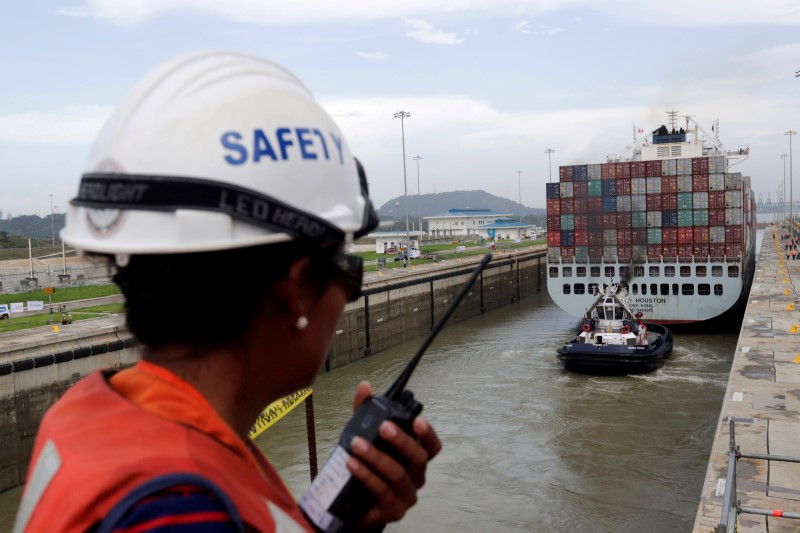By Keith Wallis
SINGAPORE (Reuters) - Bigger ships could mean bigger paydays for commodity producers when the expanded Panama Canal opens this weekend as they can utilise larger vessels more frequently to tap into fast growing Asia-Pacific consumer markets.
The Panama Canal Authority estimates that the enlarged waterway will cut sailing times between Atlantic Ocean ports and Asia by up to 16 days for ships that previously could not fit through.
Soybean farmers, natural gas producers, container shippers, and coal miners hope to be among the winners when the expanded Panama Canal is inaugurated on Sunday at a cost of $5.2 billion and after a two-year delay. Crude oil and iron ore exporters will see less benefit as they still depend on vessels too big for the waterway.
The U.S. Soy Transportation Coalition, which represents soybean farmers, said moving to ships carrying up to 100,000 deadweight tonnes (dwt) of beans on the canal from the current 76,000 tonne limit would add up to $8 million in value per vessel.
"A customer of U.S. soybeans in Asia could save 35 cents per bushel simply due to greater transportation efficiency," said Mike Steenhoek, the Coalition executive director.
The United States is the second-largest exporter of soybeans to China, accounting for 30 percent of China's 81.5 million tonnes of imports last year, according to China customs figures. Brazil accounted for 54 percent.
Shipping volumes through the Canal stalled in the mid-2000s, after rising earlier in the decade on increased Chinese trade, as vessels became too large to traverse the waterway.
Post-expansion, the Canal Authority hopes that tonnage volumes will rise by an average of 3 percent per year, from almost 341 million tonnes in 2015.
GAS & COAL
Liquefied natural gas (LNG) and liquefied petroleum gas (LPG) sellers from the U.S. Gulf and Caribbean, as well as Colombian coal suppliers should benefit from the expansion.
The U.S. is ramping up LNG and LPG exports after the shale extraction boom and will compete with Middle East LPG sellers and Australian LNG exporters.
"It will create competition for all the producers in the Arabian Gulf by getting products from the U.S. almost as quickly as from the Arabian Gulf," said a senior executive at a tanker shipping company who declined to be named.
Colombian shippers hope the bigger canal will open up trade to Asia as rising natural gas and renewable energy usage has cut coal consumption in its traditional North American and European markets.
Colombian miners have already started shipping coal to Japan and South Korea but the voyages around South America and Africa can take up to two months.
Container shippers, carrying everything from fresh food to electronics, can sail ships of up to 13,000 teu (20-foot equivalent units) through the bigger Canal from the current limit of 5,000 teu.
SLOW CHANGE
Crude oil traders will be less affected because the supertankers they use remain too big for the canal at 300,000 dwt.
Water depth and lock restrictions still mean the enlarged canal will not be able to handle the biggest 180,000 to 200,000 tonne dry cargo ships, which mostly carry Brazilian iron ore.
Shippers also say the expansion will not make an immediate impact as ports need upgrading.
"Trading patterns will not change so quickly because of loading and discharge port limitations," said Ong Choo Kiat, president and director at U-Ming Marine Transport Corporation (TW:2606), Taiwan's largest dry-bulk and tanker ship owner.
One group with generally negative views of the expansion are shippers, already battling an eight-year downturn, as shorter routes mean less charter income.

"Not only will charter hire revenues decrease in view of shorter duration, but with shorter trips the total sea days will be less and thus weigh extra on the already heavily over supplied market," said Jean Yves Brion, commercial manager at Belgian dry shipper Boconti Shipping.